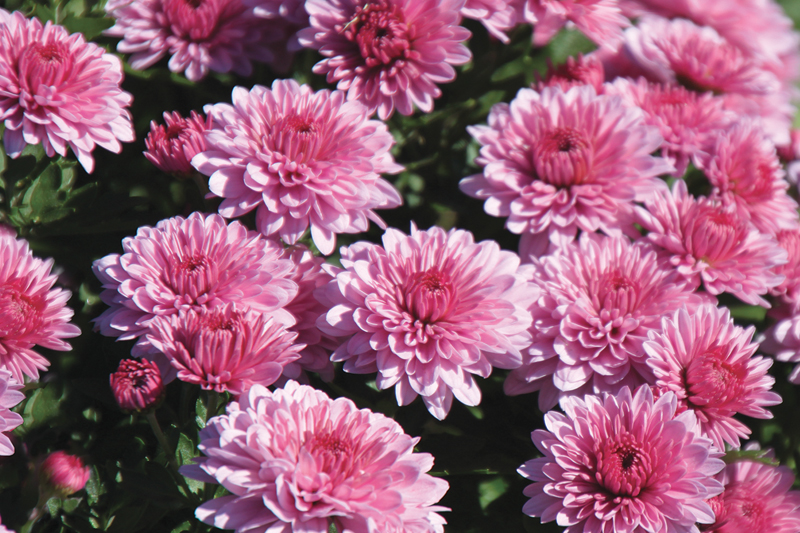Whether it is kids at a party or an entire nation, it seems things divide us. In the Old Testament, when Abraham and Lot decide to divide the land of Canaan, Abraham cuts the land in two and Lot gets first choice. So was born the divide and share, where one child cuts the cake and the other gets to choose the first piece.
And dividing plants is really a piece of cake. You can divide and share many perennial flowers, including Bee Balm (Monarda), daylilies (Hemerocallis), herbaceous peonies, Basket-of-Gold (Aurinia saxatilis) and tall garden phlox (Phlox paniculata hybrids). While most perennials need to be divided only once every three to five years, others such as chrysanthemums and asters might need to be separated more often.
Late summer and early fall are the best times to divide these. Besides giving you new plants to share, dividing perennials keeps plant sizes manageable and often rejuvenates them for many more years of bloom. For best results, divide spring- and summer-blooming flowers in the fall, and divide fall-blooming perennials in the spring. Because digging, dividing and transplanting is hard on a plant, it is best to do it when they are not blooming. This way the plant can devote all its energy to growing new roots and leaves. You can divide plants from late summer up to about a month before your first hard freeze in the fall.
A day before dividing perennials, water them thoroughly. Cut out any dead or diseased leaves and stems. You can even cut the entire plant down to just six inches high to make it easier to handle. Use a garden fork to dig up the old clumps. Be sure to cut around all four sides of the plant so you can easily lift it from the ground. With a sharp, clean knife, cut the main crown or root mass into several pieces.
Make sure each piece has part of the crown along with several buds or “eyes,” along with as many of the roots as you can muster.
Immediately plant these divisions into a new garden bed. Add compost, peat moss and slow-release organic fertilizer to the new bed. Plant the new divisions so the buds or eyes are covered by just two inches of soil.
Tamp the earth down firmly and water immediately. Water again each day for a few more days, but don’t get the ground soggy. Mulch heavily to prevent them from being pushed out of the ground by alternate freezing and thawing (heaving) during the winter. Use a loose mulch such as straw or leaves.
Some perennials are best left alone and never divided. No need to dig up and separate clumps of baby’s breath (Gypsophila), butterfly weed (Asclepias), candytuft (Iberis sempervirens), Oriental poppies (Papaver orientale), and columbines (Aquilegia).
Finally, for best results, divide and plant perennials on overcast days, and perhaps keep them in a bucket of water until planted. You can also cut back on the foliage so it is about the same size as the roots, or the new plants won’t be able to draw enough water for the remaining leaves. If the weather is extremely hot, you may even want to put up some temporary shade over the new transplants.Divide your flowering perennials and you will have plants to share, and even enough so everyone gets a choice. Whether sharing plants, birthday cake or entire kingdoms, dividing and sharing can somehow bring us together.























































